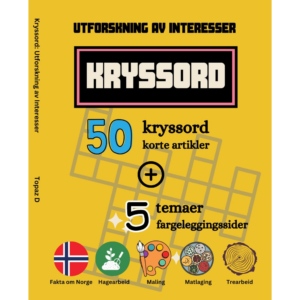
Explore & Play
Discover interesting topics and solve the accompanying crossword puzzle.
Housing crossword | Essential Home Terms
Table of Contents
Welcome! You have two options to explore this topic: start by challenging yourself with the Housing crossword and then read the article to expand your knowledge, or if you’re not too familiar with these terms, feel free to read the article first and come back to the crossword afterward. Enjoy the journey!
Housing Crossword
You can either fill in the crossword puzzle directly on this page or click the button in the bottom right corner to print it for free.

Housing Glossary: Key Terms Every Homeowner Should Know
Whether you’re buying your first home, moving into a new rental, or simply curious about housing terms, understanding the language of real estate is crucial. From the types of properties available to the structural elements that make a house a home, mastering these terms can empower you in making informed decisions. Plus, if you’re looking for a fun way to reinforce what you learn, you can dive into our housing-themed crossword puzzle! But first, let’s break down these essential housing terms.
1. Types of Residential Properties
Choosing the right type of home is the first step in any housing journey, whether you’re drawn to cozy cottages or sleek penthouses. Each property type offers unique characteristics that cater to different lifestyles and needs.
Apartment: Apartments are self-contained living units that typically make up a larger building. They are a popular choice for city dwellers looking for compact, convenient spaces that often come with shared amenities.
Bungalow: These single-story homes are known for their simplicity and accessibility. Bungalows often feature wide verandas, offering easy access to outdoor living areas, making them ideal for families or retirees.
Condominium: Condos combine the benefits of apartment living with homeownership. Unlike apartments, condos are individually owned units within a building, allowing residents to enjoy shared spaces such as pools and gyms while having private ownership of their living space.
Cottage: Known for their rustic charm, cottages are typically small, single-family homes. These quaint houses are often found in rural or coastal settings and are prized for their cozy, intimate atmospheres.
Duplex: A duplex is a house divided into two separate living units, often with shared walls but separate entrances. Duplexes are popular for those seeking rental income or shared living arrangements while maintaining privacy.
Loft: Lofts are characterized by large, open spaces with high ceilings, often found in converted industrial buildings. These unique homes appeal to those who value spaciousness and modern, minimalist design.
Penthouse: Sitting at the very top of high-rise buildings, penthouses are synonymous with luxury. These exclusive apartments typically offer the best views, private terraces, and top-of-the-line amenities.
Studio: Studios are compact living spaces where everything – from the living area to the kitchen – is integrated into one room. Ideal for individuals or couples, studios offer efficiency and affordability in urban areas.
2. Key Outdoor Features
Outdoor spaces can transform a house into a home, offering a place to relax, entertain, and enjoy nature. Whether it’s a small balcony or a sprawling patio, these features play an essential role in enhancing the living experience.
Balcony: A balcony is a small, elevated outdoor space that extends from a building’s upper floors. Ideal for enjoying fresh air in urban settings, balconies provide a personal oasis for relaxation.
Deck: Typically attached to the back of a house, decks are flat outdoor spaces often made from wood. They serve as gathering spots for barbecues, outdoor dining, or lounging under the sun.
Garden: A well-maintained garden not only adds beauty to a home but also offers a peaceful retreat. Gardens can range from flower beds to vegetable patches, bringing nature closer to home.
Patio: A patio is an outdoor area, usually paved, adjacent to a house. Patios offer a space for outdoor furniture, dining, or simply enjoying the outdoors in a private setting.
Porch: Porches are covered outdoor areas at the front of a home. They provide a sheltered spot to welcome visitors or relax on a swing while overlooking the neighborhood.
Terrace: Terraces are flat, often elevated outdoor spaces that can be used for entertainment or gardening. Unlike patios, terraces are often found in multi-story buildings or homes with sloping terrain.
3. Structural Elements and Features
A well-built home starts with understanding the essential structural features that provide safety, comfort, and aesthetic appeal. These elements shape the house’s character and function.
Basement: The basement is the lowest level of a home, often below ground. It serves as additional living space or storage and can be finished to include recreation rooms, offices, or guest bedrooms.
Chimney: Essential for homes with fireplaces, chimneys vent smoke from the house, ensuring proper air quality. They also add a charming, classic aesthetic to a home’s exterior.
Fireplace: More than just a source of warmth, fireplaces create a cozy atmosphere and often serve as the focal point of a living room. Whether wood-burning or electric, fireplaces are timeless features.
Roof: The roof protects the home from the elements. A sturdy, well-maintained roof is crucial for safeguarding the interior from weather damage.
Skylight: Skylights are windows installed in the roof or ceiling to let in natural light. They can brighten spaces like hallways and bathrooms, adding a feeling of openness.
Staircase: In multi-story homes, staircases connect floors and can be designed in various styles, from grand spirals to simple, functional designs.
Tile: Tiles are durable, versatile building materials often used in kitchens, bathrooms, and outdoor spaces. They come in various styles, from ceramic to stone, offering both function and aesthetics.
4. Indoor Spaces and Storage Solutions
Every home needs well-organized spaces to store everyday items and create a clutter-free environment. These areas ensure that everything has its place, contributing to a more efficient and comfortable living space.
Closet: Closets are essential for organizing clothes, shoes, and personal items. From walk-ins to small cupboards, having enough closet space is a key consideration in any home.
Laundry: A designated laundry area, whether a small closet or a full room, is essential for handling household chores efficiently. It’s often equipped with a washer, dryer, and storage for cleaning supplies.
Nursery: Nurseries are rooms designed for newborns and young children. They often include cribs, changing tables, and storage for baby essentials, creating a safe and nurturing environment.
Pantry: A pantry is a small room or cabinet used for storing food and kitchen supplies. An organized pantry helps keep a kitchen clutter-free and makes meal preparation more convenient.
5. Utilities and Home Systems
Utilities and home systems ensure that your house remains comfortable and functional, making everyday life easier. These features often go unnoticed but are vital for the smooth operation of any home.
Doorbell: A doorbell notifies homeowners of visitors and is a simple yet necessary addition to any entrance. Modern versions include video and smart features for added security.
Elevator: Elevators are essential in multi-story residential buildings, providing easy access for residents, particularly in high-rise apartments or penthouses.
Fence: Fences mark property boundaries and provide privacy, security, and aesthetic value. They can be made from various materials, such as wood, metal, or vinyl.
Gate: Gates provide controlled access to a property, enhancing security and creating a welcoming entrance to homes with fenced perimeters.
Garage: A garage offers a safe place to store vehicles and often serves as additional storage for tools, bicycles, and outdoor equipment.
Ladder: A ladder is an essential tool in any home, useful for reaching high shelves, cleaning, or accessing attic spaces.
Window: Windows are crucial for letting in natural light and fresh air while providing views of the outside world. Well-placed windows can transform a room by enhancing its atmosphere.
6. Renting vs. Owning: Financial Considerations
Understanding the financial aspects of housing can help you make informed decisions, whether you’re renting or buying. Each option comes with its own set of responsibilities and benefits.
Landlord: A landlord is the owner of a rental property and is responsible for its upkeep. Understanding a landlord’s role is essential for any tenant to ensure a smooth rental experience.
Lease: A lease is a binding contract between a landlord and tenant, outlining the terms of a rental agreement. It covers details such as rent, duration, and responsibilities of both parties.
Mortgage: For homeowners, a mortgage is a loan taken to purchase property. It’s a long-term commitment, typically repaid over 15-30 years, making it one of the most significant financial decisions a person can make.
Property: Owning property means having legal rights to a piece of land and the structures on it. Property ownership offers stability and the potential for long-term financial growth.
Realtor: Realtors are licensed professionals who assist with buying, selling, and renting homes. They offer valuable market insights and negotiation skills, making the process smoother.
Tenant: A tenant is someone who rents property from a landlord. Tenants have the right to live in a property for the lease’s duration and are responsible for paying rent and maintaining the space.
7. Essential Home Comforts and Energy Efficiency
Creating a comfortable home is about more than just furniture—it’s about maintaining the right temperature and atmosphere. These systems contribute to the overall comfort and energy efficiency of your living space.
Insulation: Proper insulation helps maintain a comfortable indoor temperature, reducing energy costs by keeping heat in during winter and out during summer.
Radiator: Radiators are heating devices that warm rooms by circulating hot water or steam. They are essential for keeping homes warm during colder months, especially in older homes.
Floorboard: Floorboards form the foundation of most homes’ floors. Choosing durable, high-quality materials ensures longevity and comfort underfoot.
Solar Panels: Solar panels harness sunlight to generate electricity, providing an eco-friendly alternative to traditional energy sources. They can significantly reduce energy bills while promoting sustainability.
A New Understanding of Your Home
In conclusion, understanding the key terms associated with housing not only helps you make informed decisions as a homeowner or renter but also allows you to fully appreciate the many elements that come together to create a comfortable, functional home. Whether it’s choosing between property types, navigating financial terms, or understanding essential features like insulation and skylights, knowing these terms will make you more confident in your housing journey.
Ready to test your new knowledge? Take a moment to dive into our housing-themed crossword puzzle and see how many of these terms you can remember!
Share to...
I hope you enjoy the content.
Want to receive our daily crossword puzzle or article? Subscribe!
You may also be interested in
Share to…
Want to receive our daily crossword puzzle?
-
Jigsaw Puzzles
Fish Market in Norway Jigsaw Puzzle 250 | 300 | 500 Pieces
kr 348,00 – kr 439,00Price range: kr 348,00 through kr 439,00 Select options This product has multiple variants. The options may be chosen on the product page -
Jigsaw Puzzles
Majestic Unicorn Watercolor Puzzle 250 | 300 | 500 Brikker
kr 348,00 – kr 439,00Price range: kr 348,00 through kr 439,00 Select options This product has multiple variants. The options may be chosen on the product page -
Jigsaw Puzzles
Enchanting Unicorn Watercolor Jigsaw Puzzle 250 | 300 | 500 Brikker
kr 348,00 – kr 439,00Price range: kr 348,00 through kr 439,00 Select options This product has multiple variants. The options may be chosen on the product page

















